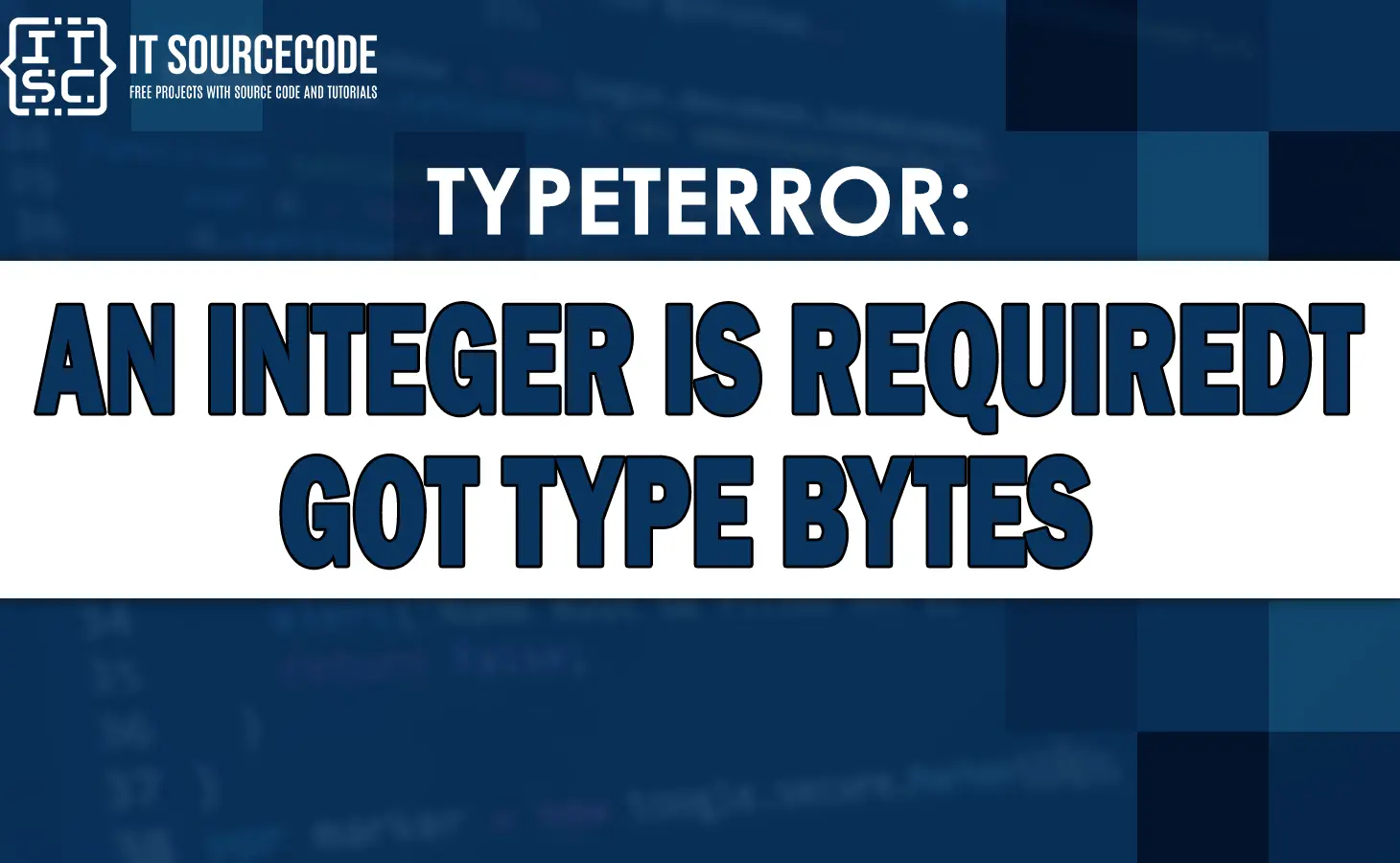Like any programming languages, Python is not uncommon to errors.
One of the common errors is the typeerror an integer is required got type bytes.
This error usually occurs if the program will attempt to execute an operation in an object of the incorrect type.
In this article, we will discuss the “TypeError: an integer is required (got type bytes)” error, its causes, and how to resolve it.
What is an integer?
Before we proceed to the causes of the error, we will understand first if what does the integer mean?
An integer is a whole number which is either a positive, negative, or zero. In Python, integers are defined as a built-in data type.
What are the causes of TypeError in Python?
The “TypeError: an integer is required (got type bytes)” error occurs if the program will try to execute an operation.
Which can be expected as an integer yet it will receive a value of a variable data type, like bytes.
This error can be caused by the following:
- Using the ord() function with a bytes object
- Using the input() function with Python 2.x
- Using the range() function with a bytes object
- Using the len() function with a bytes object
- Encoding and decoding errors
Also, read the other solve python error you might encounter while working in python program.
- typeerror: invalid type promotion
- Attributeerror: __enter__ [SOLVED]
- Attributeerror module has no attribute
- Attributeerror: module ‘numpy’ has no attribute ‘object’
Solutions to solved the TypeError: An Integer is Required, Got Type Bytes
Now that you already understand the causes of the TypeError: An integer is required, got type bytes.
Let’s discuss some solutions to resolve it.
Solution 1: Convert the bytes object to an integer
When you are using the ord() function with a bytes object, you can solve the error through converting the bytes object to an integer using the int() function.
Example on convert the bytes object to an integer:
# create a bytes object
bytes_obj = b'\x00\x00\x01\x02'
# convert bytes to integer using int.from_bytes()
int_value = int.from_bytes(bytes_obj, byteorder='big')
print(int_value) Output:
C:\Users\Dell\PycharmProjects\pythonProject\venv\Scripts\python.exe C:\Users\Dell\PycharmProjects\pythonProject\main.py
258
In this example, we create a bytes object bytes_obj that consists of four bytes.
Then we use the int.from_bytes() method to convert the bytes object to an integer.
The byteorder parameter defines the byte order of the bytes object (in this case, ‘big’ means most significant byte first).
Finally, we print the integer value int_value, which is the result of the conversion.
Solution 2: Convert the bytes object to an integer before passing it to the range() function
If you are using the range() function with a bytes object, you can solve the error through converting the bytes object to an integer first using the int() function,
For example:
# create a bytes object
bytes_obj = b'\x00\x00\x01\x02'
# convert bytes to integer using int.from_bytes()
int_value = int.from_bytes(bytes_obj, byteorder='big')
# use the integer value in the range() function
for i in range(int_value):
print(i)In this example, we pass int_value as the argument to the range() function in a loop to print out the numbers from 0 to int_value – 1.
In this situation, the loop will iterate 258 times because the integer value of the bytes object is 258 (0x00000102 in hexadecimal).
Solution 3: Decode the bytes object with the correct encoding
When you are working with files or network connections and receiving the TypeError, you may need to decode the bytes object with the correct encoding.
You can use the decode() method to convert the bytes object to a string.
Example of Decode the bytes object with the correct encoding:
# create a bytes object encoded with UTF-8
bytes_obj = b'\xc3\xa9\xc3\xa7\xc3\xa0'
# decode bytes to string using UTF-8 encoding
str_obj = bytes_obj.decode('utf-8')
print(str_obj) Output:
C:\Users\Dell\PycharmProjects\pythonProject\venv\Scripts\python.exe C:\Users\Dell\PycharmProjects\pythonProject\main.py
éçà
In this example, we create a bytes object bytes_obj which is consist of three UTF-8 encoded characters: é, ç, and à.
To decode the bytes object to a string, we use the decode() method with the ‘utf-8‘ encoding argument.
Which is the encoding used to encode the bytes object. The resulting string str_obj consist of decoded characters.
Note: The encoding used to decode the bytes object need to match the encoding used to encode into the original string. When a different encoding is being used, the decoded string may consist of errors.
FAQs
No, this error is specific to Python and occurs if a function or method will expect an integer input yet it will receive a bytes object.
Yes, you can use the unpack() method to convert a bytes object to an integer. For example, struct.unpack(‘i’, b’\x00\x00\x00\x01′) will return the integer 1.
Conclusion
In conclusion, the typeerror an integer is required got type bytes is a common error that occurs in Python. This error can be confusing, specifically if you are not sure what’s causing it.
However, through knowing the causes of the error and applying the solutions we’ve discussed in this article. You can solve the TypeError and continue working on your Python code smoothly without any issues.
Remember that always double-check your inputs and make sure it will match the expected type to prevent this error in the future.

